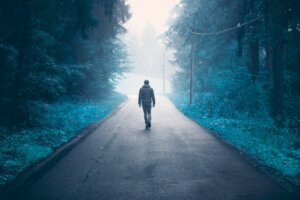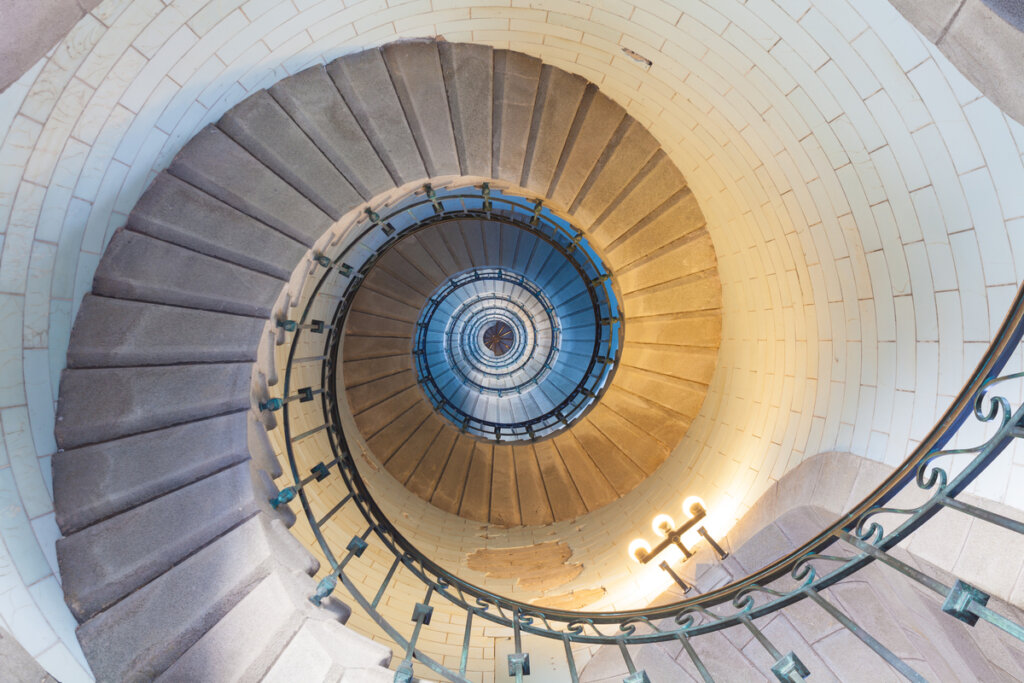The Hero's Journey, According to Joseph Campbell

Do we always write the same story? What determines our path of evolution? There are different theories, and one of them was proposed by Joseph Campbell. It describes a path of personal development, which he called The Hero’s Journey, that each of us lives at different times in our lives.
The choice of a path would depend a lot on the energetic resonance of the person, their courage, and their bravery in the face of the challenges they assume. In this regard, consciously or not, we can all see ourselves reflected in the same basic model of history, and Campbell proposes a structure of 17 phases to understand it.
Who is Joseph Campbell?
Joseph Campbell (1904-1987) was an American writer and professor, specializing in the study of mythology and religion, who discovered the repetition of a basic pattern of experiences by studying many stories from around the world in which reference is made to a god, divinity, savior, or hero.
Campbell describes the stages that a character or hero goes through (the single myth or monomyth) and that can be found in Western and Eastern religions alike. He explained it extensively in his book The Hero with a Thousand Faces (1949), one of the most influential works in 20th-century literature. In summary, he tries to explain the very simple and basic concept of “the pursuit of happiness,” which human beings long for so much.
“Your life is the fruit of your own doing; you have no one to blame but yourself.”
-Joseph Campbell-
The hero’s journey
The hero’s journey is a structure noted for its flexibility, as it’s capable of mutating without sacrificing its magic. The different phases attempt to explain the circular story in which a protagonist begins a journey that will change their life, facing different difficulties to achieve a goal and be able to return home.
The hero’s journey’s circularity mimics the world’s traditional compass: Life and death, order and chaos, consciousness and unconsciousness. The protagonist goes through several phases that take the action to the end, completing what’s called the hero’s journey arc: Their evolution.
“The cave you fear to enter holds the treasure you seek.”
-Joseph Campbell-
The 17 phases of the One Myth structure
Campbell describes seventeen stages or steps along this journey, although very few myths fulfill all seventeen. Some add many of the stages and others only some. The seventeen stages can be organized in different ways.
To understand their development, they’re usually divided into three sections: Departure (sometimes called “separation”), initiation, and return.
Departure
The output deals with the adventure of the hero before fulfilling the mission. In this section, the following aspects are highlighted:
- The Ordinary World and the Call to Adventure: Amidst a context of normality, something happens that functions as a call to action.
- Refusal of the Call: Obligations, insecurity, weakness, and fear influence the hero to reject the call and prefer to remain as they are. But finally, by force, they must embark on the adventure.
- Supernatural Aid: The guide or instructor appears who will introduce the hero to this new world. They often prepare the hero for what’s to come and offer them tools and amulets of protection. In this way, the protagonist is prepared to cross the border from the ordinary world to the extraordinary world.
- The Crossing of the First Threshold: The hero enters the field of adventure, venturing into unknown and dangerous terrain where no rules or limitations are known. They have crossed the door. The hero is now ready to take action and truly begin their quest, be it physical, spiritual, or emotional.
- In the Belly of the Whale: This represents the hero’s final separation from the known self and world. By participating in this stage, they’re willing to undergo a metamorphosis.
Initiation
The initiation deals with the hero’s various adventures along the way:
- The Road of Trials: This stage involves various tasks that are seemingly impossible, which the hero must overcome. They make mistakes and discover their weaknesses, strengths, and talents through them.
- The Meeting with the Goddess: The hero discovers how boundless and powerful love and unconditional surrender are. True love personified.
- Woman as the Temptress: Many activities, pleasures, and rewards tempt the hero to give up.
- Atonement with the Father/Abyss: The hero confronts whoever it is who holds the ultimate power in their life and is initiated.
- The Apotheosis: The ultimate metamorphosis or transformation elevates the hero to a higher plane.
- The Ultimate Boon: This symbolizes the achievement of the mission, the climax. All the previous steps served to prepare the hero for this moment in which he achieves that precious transcendental objective. This is the climax of the hero’s story where everything they love is put on the line.

Return
The Return is about the hero’s return with the knowledge and skills acquired on the journey.
- The Refusal to Return: Having found happiness and enlightenment in the other world, the hero doubts, disbelieves, or refuses to return to the ordinary world to bestow the acquired gift on their fellows.
- The Magical Flight: Sometimes, the hero must escape with the obtained gift, fleeing from gods and dangers.
- Rescue from Without: Just as they needed initiators and guides to start the adventure, they’ll need assistants or rescuers to initiate the return, because they’re probably hurt, weak, or disillusioned by the experience.
- The Crossing of the Return Threshold: The purpose of return is the preservation of the wisdom gained in the search. Incorporating that wisdom into human life and then finding a way to share it with the rest of the world.
- Master of Two Worlds: The hero strikes a balance between the material and the spiritual. Getting to feel full and competent in both worlds, the ordinary and the exceptional, the inside and the outside.
- Freedom to Live: Balance and understanding lead to freedom from the fear of death. The hero, with their mighty achievement, chooses to live in the moment.
Upon returning to the ordinary world, the character will have grown as a person and acquired many lessons. They’ll have faced many terrible dangers, including death. Now, they look forward to the beginning of a new life. They finally discover the treasure of their own identity.
The hero’s journey represents three things: Change, success, and the trial of the journey lived. Ultimately, the hero will return to where they started, but the ecosystem will clearly never be the same again.
“What is it that makes you happy? Stay with it, no matter what people tell you. This is what I call ‘following your bliss.'”
-Joseph Campbell-
All cited sources were thoroughly reviewed by our team to ensure their quality, reliability, currency, and validity. The bibliography of this article was considered reliable and of academic or scientific accuracy.
- Campbell, J. (1990). El viaje del héroe. EU Editorial: Harper Collins.
This text is provided for informational purposes only and does not replace consultation with a professional. If in doubt, consult your specialist.








